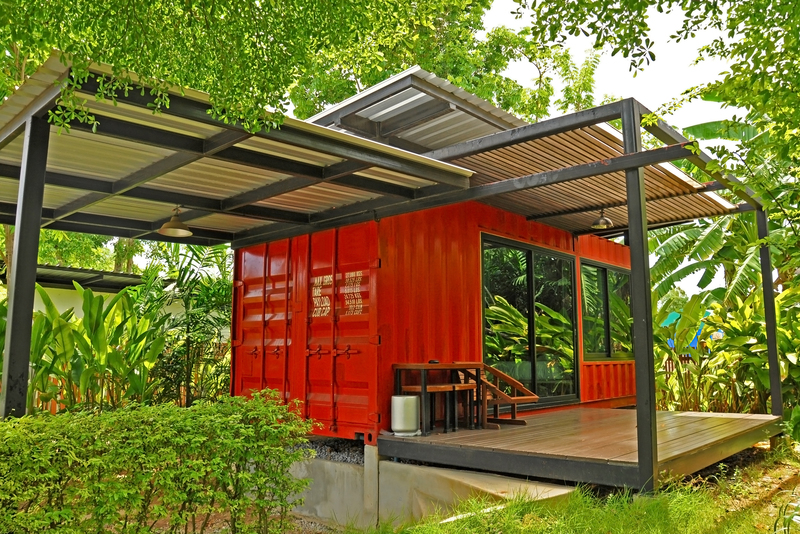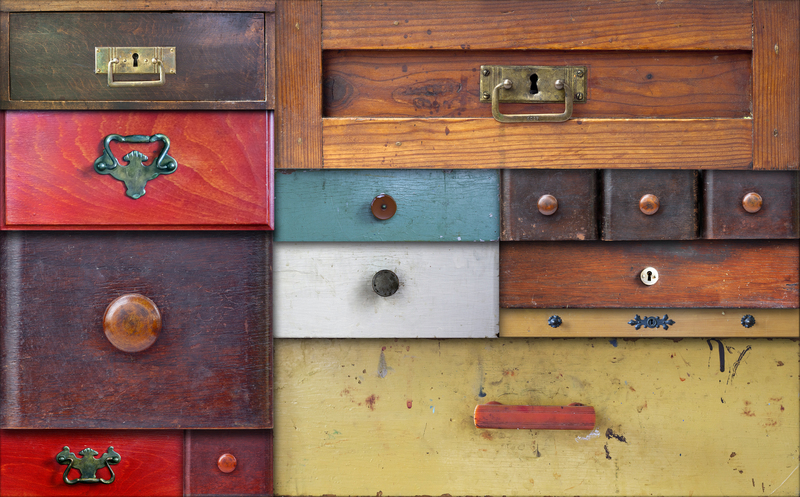Giving Old Pots and Pans a Second Life Through Recycling
Is your kitchen cabinet overflowing with old, scratched, or rusty pots and pans that no longer serve their culinary purpose? Instead of tossing them in the trash, giving old pots and pans a second life through recycling is an eco-friendly, responsible way to clear clutter and protect our planet. In this comprehensive guide, you'll discover creative options for recycling cookware, the environmental benefits, where and how to recycle different materials, as well as inspiring upcycling projects that breathe new life into your unloved kitchenware.

Why Recycle Old Pots and Pans?
Each year, an estimated 2.6 million tons of non-durable housewares end up in landfills in the United States alone, including tons of cookware. Recycling old pots and pans not only declutters your kitchen, it helps conserve resources, reduces landfill waste, and saves energy compared to manufacturing new items. Here's why you should think twice before discarding them:
- Resource Conservation: Most cookware is made from metals like aluminum, stainless steel, and copper, all of which are finite resources and can be recycled repeatedly without degrading their quality.
- Waste Reduction: Tossing cookware in the trash contributes to the ever-growing problem of landfill waste that can take centuries to break down.
- Climate Impact: Smelting and extracting virgin metal ore emits significantly more greenhouse gases than recycling existing metal products.
- Community Benefit: Many recycling centers and thrift shops use revenue from scrap metal to fund charity programs or local initiatives.
Recycling your old kitchenware is a simple step with a big impact on the environment!
Identifying What Your Old Cookware is Made Of
Before you can recycle or upcycle, identifying the material of your cookware is crucial. Pots and pans come in a wide range of materials, each with its own recycling process:
- Aluminum: Lightweight, non-magnetic, often with a dull silver finish. Common in budget-friendly cookware.
- Stainless Steel: Heavier, rust-resistant, magnetic, and usually shiny. Handles are often riveted.
- Copper: Distinct reddish-brown color, sometimes with a stainless or tin-coated interior.
- Cast Iron: Hefty, dark, sometimes rusty if old. Requires different handling than other metals.
- Non-stick (Teflon, ceramic): Usually aluminum or steel base coated with a non-stick layer. Scratched or worn coatings aren't suitable for food use, but the base metal can be recycled with care.
Tip: If you're unsure, try the "magnet test": a magnet will stick to iron and steel but not to aluminum or copper.
How to Recycle Old Pots and Pans: Step-by-Step Guide
1. Remove Non-Metal Parts
Handles, lids, or knobs made from wood, plastic, or silicone should be unscrewed or pried off. Most scrap yards only accept *pure metals* without added materials, so separating these parts increases your chances of successful recycling.
2. Clean the Cookware
Give your old pots and pans a quick scrub to remove food residue or oil. While not necessary for the recycling process, it makes the items easier to handle, and in some cases, can make your items eligible for donation.
3. Sort by Material Type
- Gather all-aluminum items together.
- Do the same for stainless steel, cast iron, and copper cookware.
Sorting helps recycling facilities process and value your scrap more easily.
4. Decide Where to Recycle
- Scrap Metal Yards: Most will accept metal pots and pans, and may pay a small fee based on material and weight.
- Curbside Recycling: Some municipal programs accept cookware, typically aluminum or steel. Check your local rules online.
- Household Hazardous Waste Events: Some communities hold special events or designated drop-offs for hard-to-recycle items.
- Retail Take-Back Programs: Certain retailers (like IKEA and Sur La Table) periodically offer cookware recycling events.
Contact your local waste management authority or search online for "pots and pans recycling near me" to find the best local option.
5. Drop Off or Arrange Pickup
Transport your sorted cookware to the chosen recycling center or schedule a collection if available.
Eco-Friendly Alternatives to Disposal
Donate Usable Cookware
If your old pots and pans are still in decent condition, donation is a great way to give them a new home before choosing recycling.
- Thrift stores and charity shops
- Homeless shelters, community kitchens, or refugee welcome centers
- Local Buy Nothing or Freecycle groups
- Friends, family, students, or neighbors setting up their first kitchens
Make sure to wash and inspect cookware before donating, and avoid giving away anything with significant damage, missing parts, or flaking non-stick coatings.
Upcycle Old Pots and Pans Into Something New
Recycling old cookware doesn't only mean melting it down--it can also mean transforming it into creative and functional household items with a bit of DIY spirit!
- Planters: An old pot with drainage holes becomes a quirky flowerpot for your patio or balcony garden.
- Garden Art: Pans with interesting shapes can become birdbaths, feeders, or whimsical yard art with a coat of colorful paint.
- Organizers: Use deep pans for storing tools, craft supplies, or hardware in your garage or workshop.
- Clocks: Turn a decorative frying pan into a kitchen wall clock by adding a clock mechanism.
- Candle Holders: Small cast iron skillets or muffin tins can make rustic, heat-safe candle molds.
- Lamps or Light Fixtures: Creative crafters repurpose colanders and metal pots as unique lampshades for industrial-style decor.
With a little paint and imagination, old cookware makes a stylish statement in any home or garden!
Important Considerations When Recycling or Upcycling Cookware
- Coated or Non-Stick Pans: If your pans have non-stick coatings (like Teflon), most scrap yards will still accept them but may require you to remove as much coating as possible. Contact your recycling center for their rules.
- Plastic Handles: Always remove plastic handles or knobs unless you are specifically told they are accepted.
- Glass Lids: Tempered glass cannot be recycled with household bottles and jars; check with your center for disposal or reuse ideas.
- Cast Iron: These pans are heavy and valuable as scrap, but they are also highly durable--consider restoring or donating instead of recycling if possible!
- Check Local Regulations: Recycling processes and rules often vary by location, so always confirm what's accepted in your community.
The Environmental Benefits of Cookware Recycling
Diverting old pots and pans from landfills offers several environmental advantages:
- Reduces Landfill Overflow: Metals take hundreds of years to decompose and may leach harmful chemicals into soil and water.
- Saves Energy: Recycling metals uses 80-95% less energy than producing them from raw ore.
- Conserves Natural Resources: Every recycled pan means less need for destructive mining and pollution.
- Supports Circular Economy: Old cookware becomes raw material for new goods, reducing waste and supporting green jobs.
Did you know? Aluminum is one of the most recycled materials globally, and can be reused indefinitely without losing quality!
Frequently Asked Questions About Recycling Old Pots and Pans
Can all pots and pans be recycled?
Most metal pots and pans can be recycled, including aluminum, stainless steel, copper, and cast iron. However, if the item has a non-removable non-stick coating, some centers may not accept it--or may require you to do some prep work. Always call ahead.
Can I put old cookware in my curbside recycling bin?
Sometimes. Some local recycling programs accept metal cookware, while others do not. Most curbside programs focus on cans, bottles, and certain plastics. For larger or odd-shaped items, check with your waste management provider online before placing cookware out for pickup.
How do I safely dispose of non-stick pans?
If your pan's non-stick coating is flaking or damaged, it can't be donated for further food use. Remove handles or plastic parts, wipe clean, and see if your recycling center takes them as scrap metal. Never incinerate non-stick cookware, as this can release harmful fumes.
What about cookware with mixed materials (glass lids, plastic, etc.)?
Separate materials as much as possible. Glass lids can't be recycled with regular glass bottles, but may be reused or donated. Plastic or wood handles should be removed and disposed of according to local rules.
Is it better to donate or recycle?
If the cookware is safe, clean, and functional, *donate first*! If not, recycling is your best option.

Making a Difference One Pan at a Time
Giving old pots and pans a second life through recycling is an easy, effective way to reduce your household's footprint and support a circular economy. It clears space in your cupboards, helps the environment, and can even inspire you with creative new uses for cast-off cookware.
Ready to recycle or upcycle your old kitchenware? Check your local recycling guidelines, reach out to community groups, or try your hand at a fun DIY project. Every little action adds up to a cleaner, greener planet--and it all starts in your kitchen!
Conclusion: Embrace the Power of Recycling
We all want cleaner, more organized homes and a healthier planet for future generations. Giving your unused, broken, or outdated pots and pans a proper send-off by recycling, donating, or upcycling helps achieve both.
- Sort and prepare your cookware for recycling to make the process smooth and effective.
- Consider donation or creative upcycling for items with life left in them.
- Support local recycling and reuse organizations that make your community stronger.
Don't let old pots and pans go to waste! With a little effort, you can ensure your cookware has a lasting legacy--either in someone else's kitchen, as dazzling garden art, or as recycled material for the products of tomorrow.